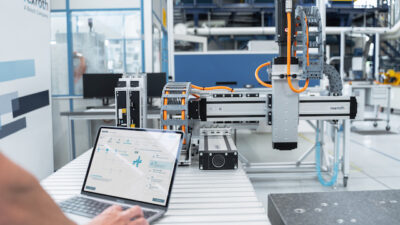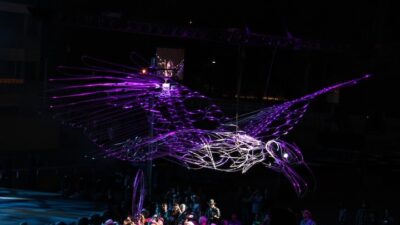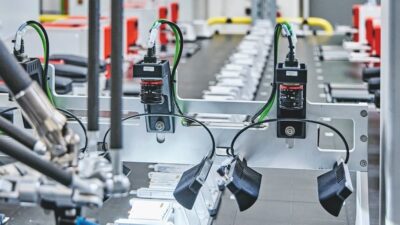Polish industry: A time of significant investments
Some overseas investors and analysts have begun calling Poland “small China.” According to a November 2007 Forbes report, Poland, China and Vietnam are among the best places for production and service investments in the world. Recently, Ernst&Young also ranked Poland as second among countries in which companies are planning to invest, stating that Poland offers “ excellent productivity and flexible employment regulations.” Furthermore, the country has made substantial infrastructure investments to improve roadways and airports in preparation for Euro 2012, the European soccer championships and the largest sports event ever to take place in Poland.Another factor contributing to the dramatic growth in technology and automation in Poland is active participation in the European Union’s Seventh Framework Programme (FP7). The FP7 is the European Union’s main instrument for funding research in Europe and, between 2007 and 2013, some 50 billion Euros will be spent on collaborative research and development for new technologies.The goal is to establish, in cooperation with universities, new R&D divisions within participating companies with the intent to increase the level of employee knowledge and technical understanding. The mechanisms for cooperation between companies or any size are provided within the FP7. One such arrangement is called “clusters,” which is a group of companies and universities from the same region which will share financing for investments in buildings, technology, industrial systems and people.The most active cluster in Poland is the West-Pomeranian Cluster of Chemical Industry. There are seven on-going projects prepared by the members of “Green Chemistry” (the name of this cluster), including one aimed at encouraging young graduates of the Szczecin University of Technology to stay in the region of Poland from which they came instead of pursuing careers in other countries. As manufacturing and investments in Poland– foreign or otherwise – continue to grow, so too will the need for talented and skilled technical professionals. Polish market industrial automation trendsDuring 2007 and 2008, there were two notable trends which emerged in industrial automation in Poland:Safety has permeated virtually every aspect of automation technology in Poland. And although solutions such as PROFIsafe and SafeLOGIC, for example, are still not as widespread as in other areas of the world but there are more and more companies that understand the global trend and are beginning to adapt.Last year we asked readers of Control Engineering Poland about their knowledge of motion control technology with regards to PLC programming and the modules they are using. The results showed that, when compared to North American readers, there are almost twice as many users of PLC motion control modules than in Poland. However, many solution providers have begin to introduce motion control technology within Poland and items such as digital servodrives are gaining in popularity. In fact, Control Engineering Poland recently presented an award to Mitsubishi Electric for their innovative MRJ-3 motion control solution.Motion control– Digital servodrivesThe use of PLCs in motion control applications in Poland in 2007 is half of that in the U.S., but during the last year growth of Polish servo drives and PLC motion control modules was notable. Knowledge, appreciation and acceptance of digital motion control is on the rise within Poland’s engineering community and increasing number is becoming familiar with the concept of “PLCopen Motion Control.” There is also a great deal of technical university graduates who know how to program advanced motion applications. They are highly-educated and are becoming an attractive addition to the labor market in Poland and the rest of Europe.In 2007, 84% of Control Engineering Poland’s readers stated that reliability is the main criteria when selecting a drive, followed by price (70%), range of available speed (60%) and stability/consistency during operation (55%). Due to the growing popularity and adoption of motion control in Poland, technical support is also very important. Nearly 55% cited that technical support is also a key selection criteria, and 45% of users indicated they are very satisfied with the level of support from their automation systems vendor.Today, many machines are imported from Western Europe and installed in Poland. A typical practice in this exchange is to remove all the control electronics from the device, thus adding new life to the machine. Many applications require digital motion control and 80% of these modernized machines are equipped with the digital servodrives.Basic and advanced control systemsIndustrial PCs are typically used for complex analysis of large amounts of archived data, as well as for data visualization and the development of industrial network infrastructure, but using industrial PCs for control tasks is still relatively rare. For control, users in Poland prefer the use of traditionalIn the beginning of 2007, Control Engineering Poland polled almost 160 subscribers regarding their involvement with control system development. Of those, 43.9% said they are involved in the selection of the PLC model, 19.51% are involved with PLC application development, 14.63% participate in the development of buying procedures.Among the Polish systems integrator community, the use of PAC systems is on the rise. According to the same survey, nearly 26% confirmed the use of PACs in current or upcoming projects. This is consistent with that of adoption in North America, which is listed at roughly 22%.The evolution of the Programmable Logic Controllers is unquestionable, but the global market cannot afford to suddenly renew all the control system. The same is true for Poland. The market cannot handle a revolution– only evolutionary changes are acceptable. That is the driving force behind the development of advanced intelligent modules for PLCs and the dynamic which led to the introduction of a new term – Programmable Automation Devices (PAD) – in the February 2007 edition of Control Engineering Poland.PADs expand upon the functionality of “traditional” PLCs by giving users greater flexibility via the use of many kinds of process interfaces. The user environment is familiar and user-defined functions, function blocks, user data types and the like are fully available in even the most basic PAD model. As a result, users do not need to buy an expensive PLC to have all those options.Energy, education and innovationAs in virtually every part of the world, more efficient and effective use of energy sources is a key focal point in Poland and throughout Europe.d share insights and opinions of how to pursue alternative energy sources. The main conclusion was that only a focused global effort can lead to an improvement, stating that dividing markets will trouble all.”The World Energy Dialogue showed us that we have the knowledge, technology and strategies necessary to obtain energy in an environmentally-friendly way,” said one participant. “Now we are able to prepare a long term climate protection policy and continue to leverage innovative products and technologies which let us make use energy without destroying nature.”Fore more information on ENERGY at the Hannover Messe 2008, visit https://www.hannovermesse.de/energy_e .At the Faculty of Electrical Engineering, Szczecin University of Technology there is a post graduate course called “Management in electrotechnics” which main foundation is to teach students how to optimally manage and use the energy resources and electrotechnical instrumentation. Companies like Mitsubishi Electric are also playing an active role and understand that the future of energy use and availability lies in the hands of young people.To enable more young people to pursue careers in industrial automation, Mitsubishi has teamed-up with Control Engineering Poland to launch an Automation Scholarship Competition.“A fundamental change to the national industrial base in countries like Poland is happening now, and it will continue over the next decade or more,” reads text from the official competition website. “Thus the next generation of engineers is critical to national development. Mitsubishi wants to do everything to encourage young engineers to grasp the full potential of automation, to be able to see beyond the obvious to realizing that true automation is a never-ending process of improvement. Because of this a competition has been announced in which students at any Polish university can submit new and innovative ideas that use Mitsubishi Electric Automation equipment in a practical application to achieve energy savings, improved precision and quality, or improved process outputs.”Early results from the competition have been very promising and the winners were announced at an award ceremony in Warsaw in late February. At the time of publication, the winning entries were not yet available. For more information, however, visit www.automation-scholarship.com .ConclusionAs a conclusion of the market in “Small China”– Poland let us call the sentence of Oliver Wendell Holmes (he was a physician by profession but achieved fame as a writer; he was one of the best regarded American poets of the 19th century):“I find the great thing in this world is not so much where we stand as in what direction we are moving.”Krzysztof Pietrusewicz is Assistant Professor at the Institute of Control Engineering, Szczecin University of Technology, Poland. He is also an editor for Control Engineering Poland and the industrial automation systems consulting expert within the West-Pomeranian Cluster of Chemical Industry “Green Chemistry”.– Krzysztof Pietrusewicz, PhD, for Control Engineering Poland



